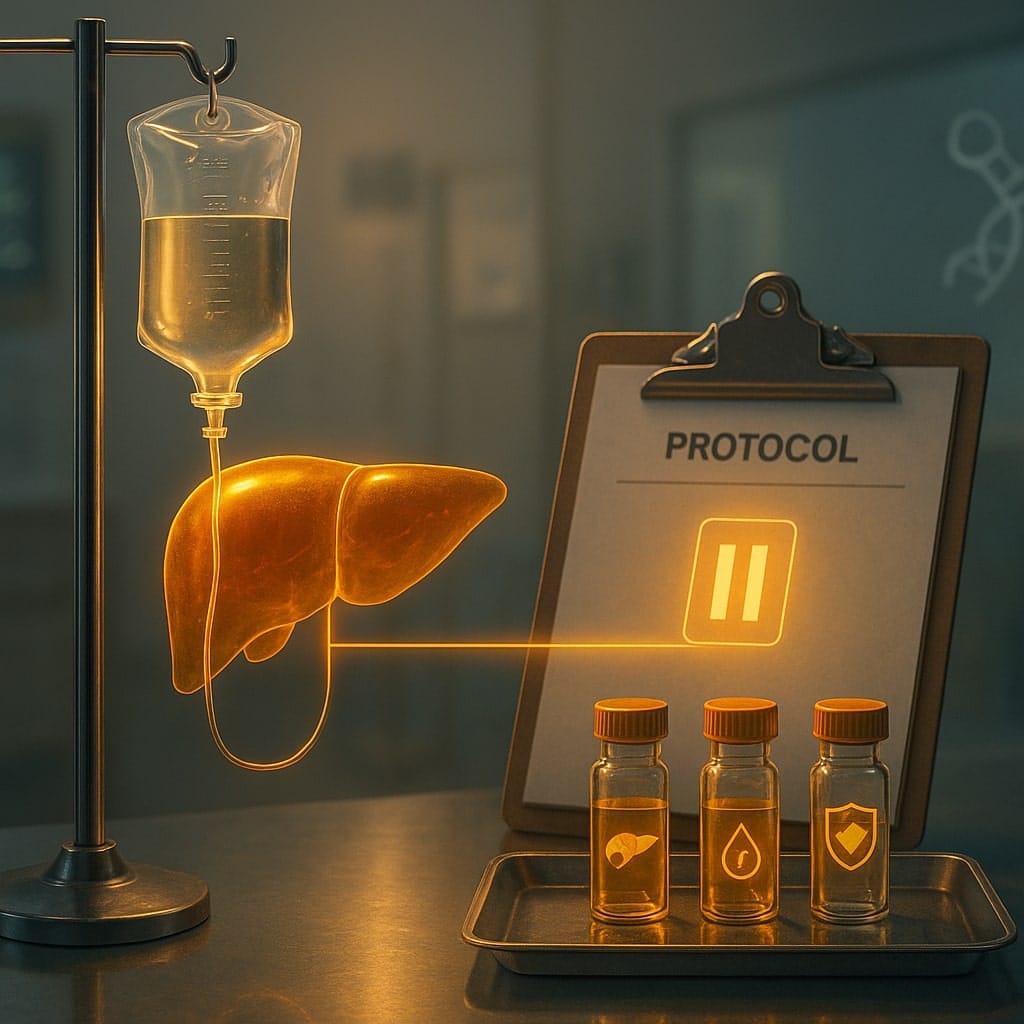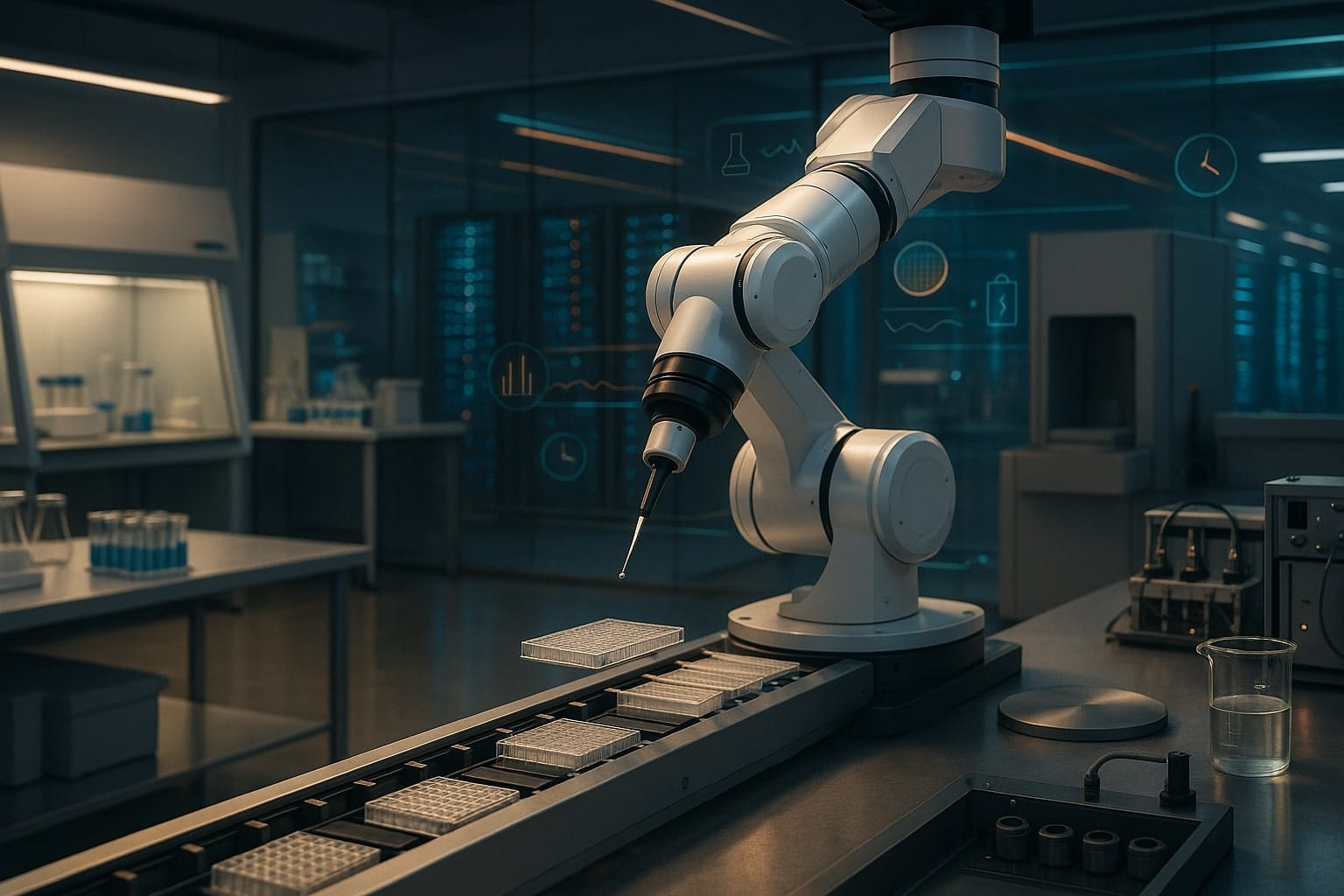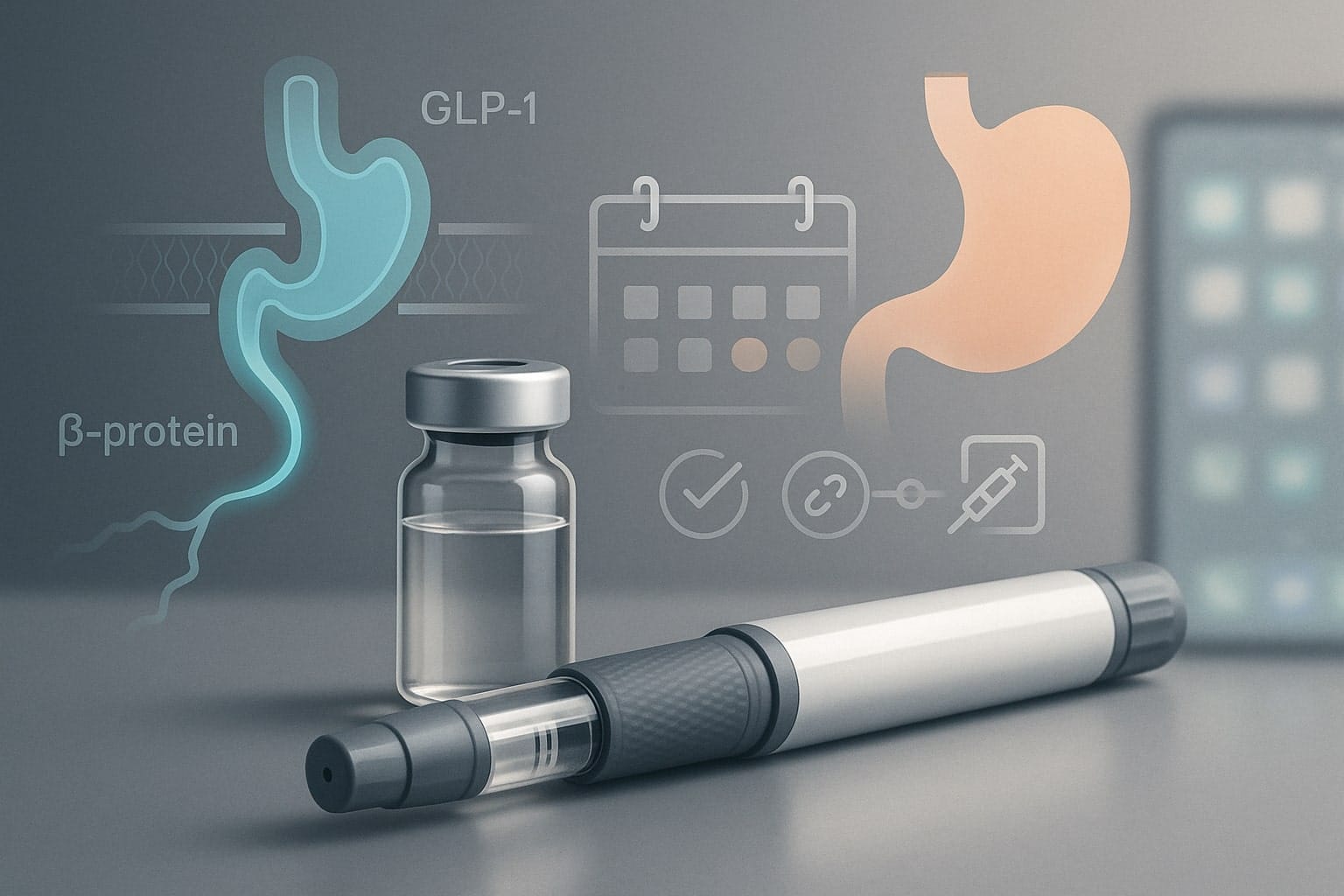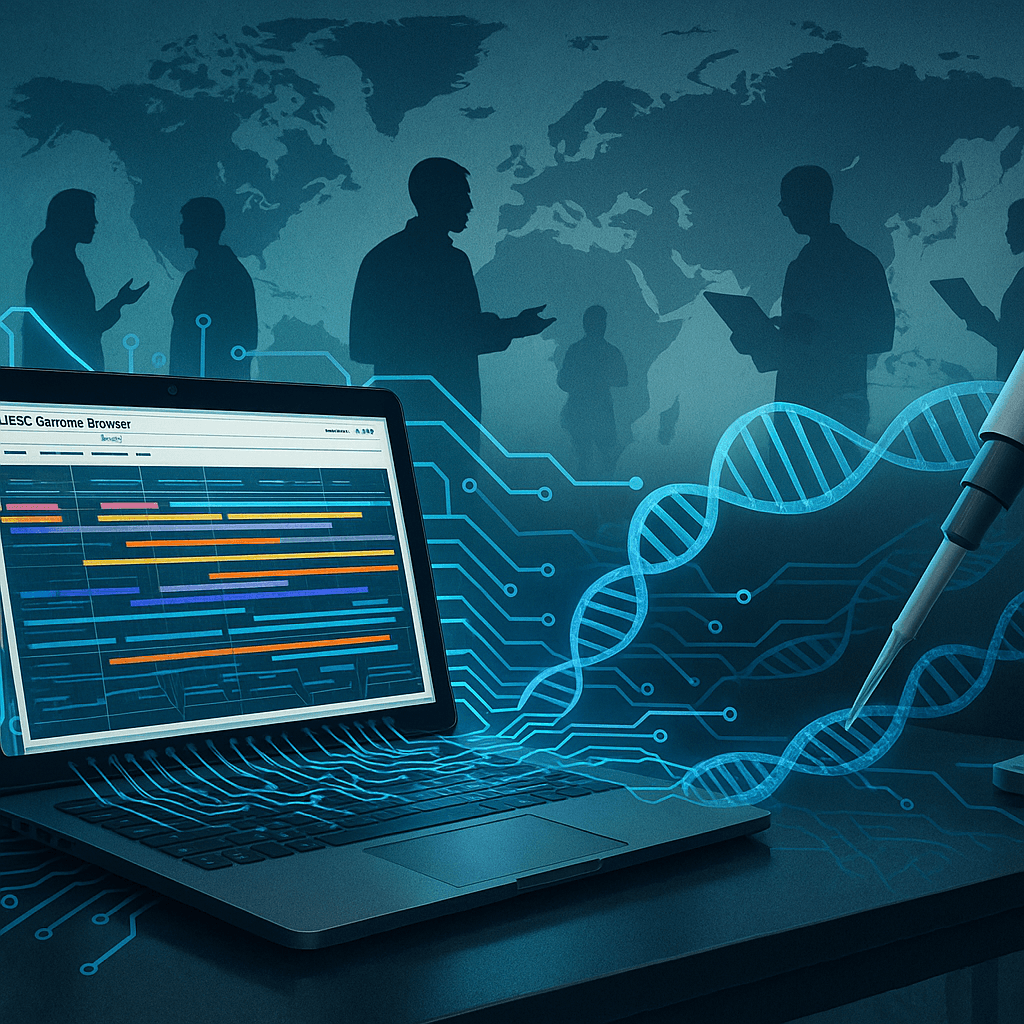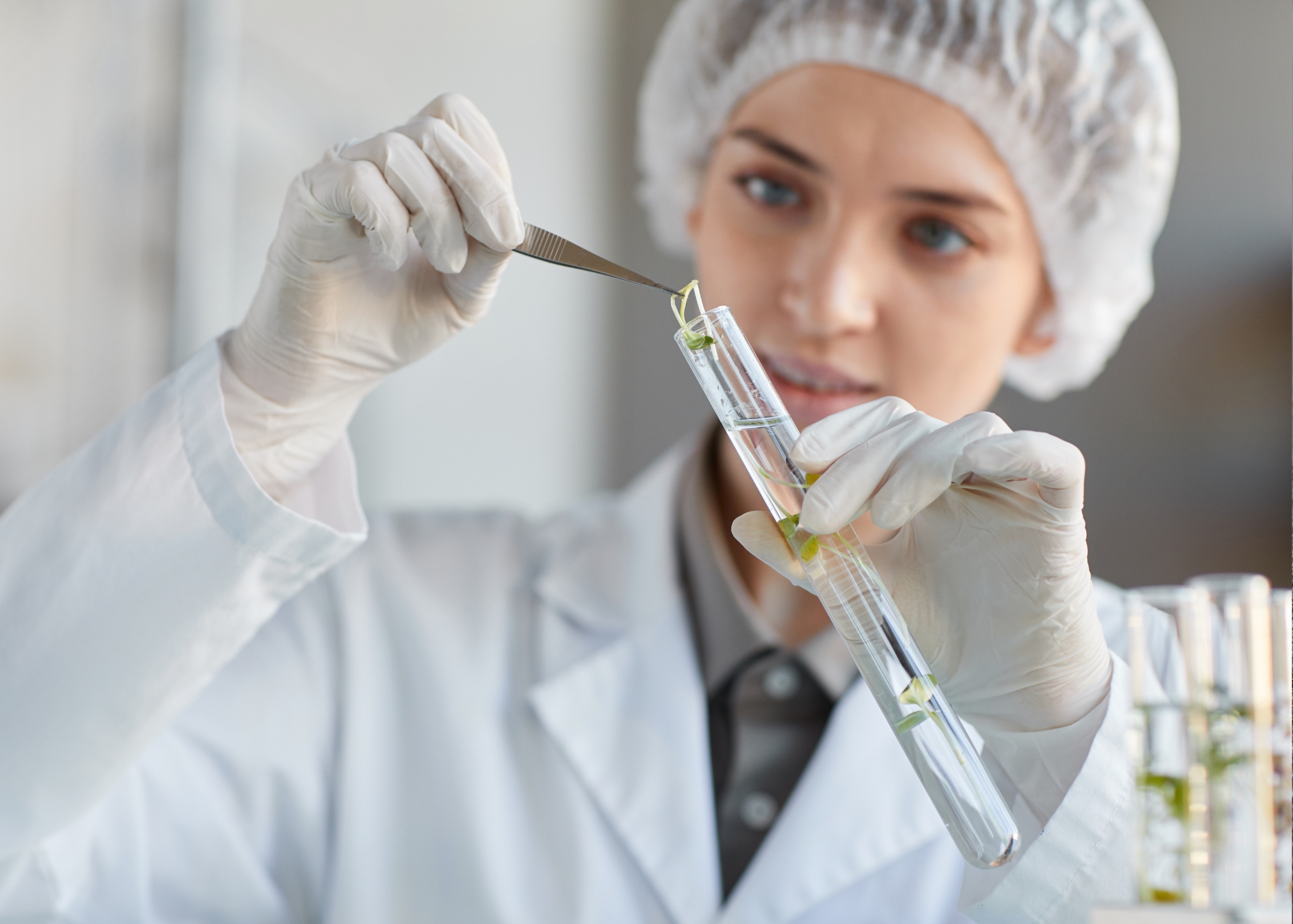By investing $80 million to transform a small California fermentation plant into a national biomanufacturing facility, the U.S. is signaling that biology may be the next frontier of industrial policy. This week’s announcement that BioMADE and Lygos—partnering with the Department of Defense—will convert Lygos’ pilot plant in Hayward, CA into a multi-user biotech production site is more than a science story. It marks a strategic shift in how America plans to make critical goods, blending economic policy with national security in much the same way last year’s CHIPS Act supercharged domestic semiconductor fabs. Policymakers and investors should take note: the bioeconomy is poised to join chips and clean energy at the heart of America’s post-pandemic industrial realignment.
America’s new bet on biomanufacturing comes amid a broader rethink of supply chains and technological self-sufficiency. Just as the CHIPS and Science Act of 2022 earmarked $52.7 billion to revive U.S. semiconductor manufacturing (sparking over $300 billion in private fab investments), the Defense Department and White House are now pouring funds into biotechnology. In late 2022, President Biden’s National Biotechnology Initiative announced over $2 billion in federal funding to “lower prices, create good jobs, strengthen supply chains, improve health outcomes, and reduce carbon emissions” through biotech. Of that, $1 billion was set aside by DoD to build bio-industrial manufacturing infrastructure over five years. The Hayward facility is one of the first tangible fruits of this effort – a 25,000-square-foot pilot plant upgraded with Pentagon dollars to scale up production of bio-based chemicals, materials and other goods. In short, Washington’s playbook for chips – public investment to catalyze a domestic industry – is now being applied to the bioeconomy.
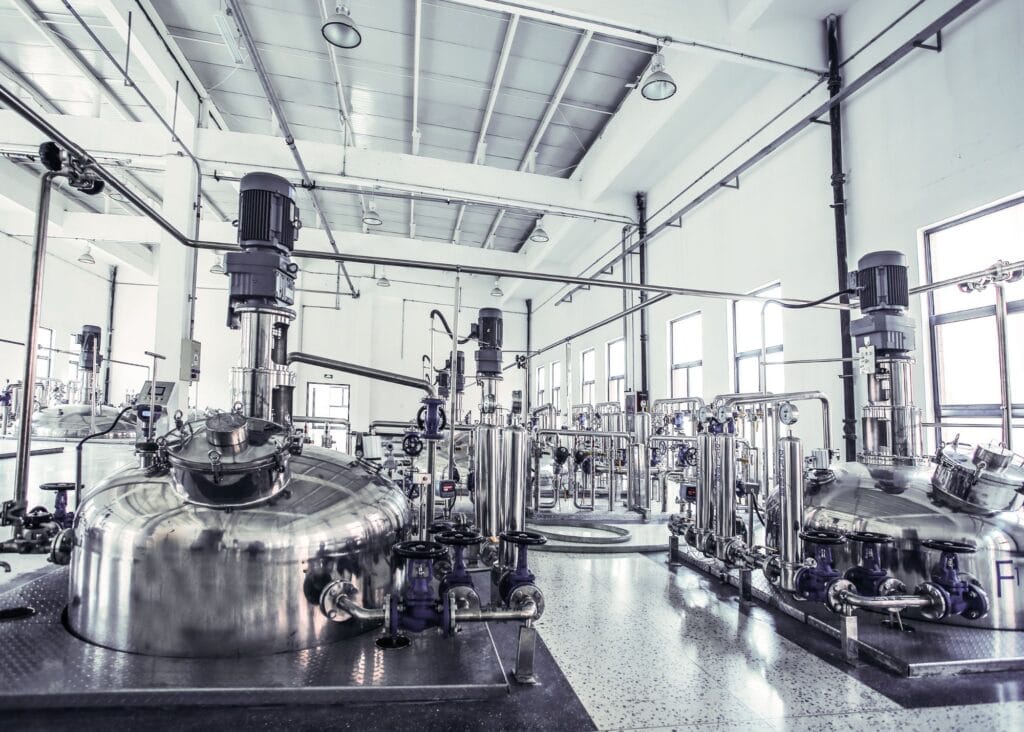
Table of Contents
ToggleFrom CHIPS to Cells: A Shift in Industrial Policy
This new project in California epitomizes a growing consensus in Washington that active industrial policy is essential to stay competitive. After decades of relying on global markets, the U.S. is hedging against geopolitical supply risks by building critical manufacturing capacity at home. The CHIPS Act was a watershed for this approach, not only funding factories but also “jump-starting R&D and commercialization of leading-edge technologies”. It showed that strategic government spending can unleash private investment and shore up supply chain resilience in a high-tech sector. Now, the focus is expanding from silicon chips to biology’s “chips” – microbes and bioreactors that can manufacture everything from fuels to pharmaceuticals.
Yet unlike semiconductors, biomanufacturing has flown under the radar. There is no single “BioCHIPS Act” from Congress (at least not yet). Instead, support has come through a patchwork of initiatives: the 2022 executive order on biomanufacturing, Defense Production Act spending, and public-private consortia like BioMADE. BioMADE (the Bioindustrial Manufacturing and Design Ecosystem) itself was launched with an $87 million DoD award in late 2020 as part of the Manufacturing USA network, bringing together companies, universities, and agencies to bridge the gap between lab research and at-scale production. In many ways, BioMADE is to biomanufacturing what the old SEMATECH consortium was to semiconductors – a government-backed alliance to rebuild a domestic industrial base.
The Hayward pilot facility is now set to become the West Coast node in a national network of bioindustrial hubs. BioMADE’s announcement notes it will independently operate the site as the second in its nationwide infrastructure network, following a larger demonstration-scale plant in Minnesota unveiled just a day earlier. That Minnesota facility, in the Twin Cities suburb of Maple Grove, will house two 25,000-liter fermenters and related equipment in a 122,000-square-foot space – an even bigger step up toward full-scale production. Together, these facilities represent a new federally supported “bioindustrial commons”: shared resources where startups, defense programs, and industry can pilot new bioproducts without each having to invest hundreds of millions in their own plants. This model – government builds the workshop, private firms craft the innovations – is a notable evolution of the public-private partnership concept, and a deliberate strategy to accelerate the bioeconomy.
To put this in perspective, consider how America’s biotech prowess has until now been largely confined to R&D. The U.S. leads in synthetic biology research and startup formation; its scientists have pioneered gene editing, engineered medicines, and advanced bio-based materials. But when it comes to manufacturing those breakthroughs at scale, the picture is less rosy. The hard truth is that much of the production of biotech products – from life-saving drugs to everyday commodity chemicals – happens overseas, or not at all. The Pentagon’s investment in facilities like Hayward aims to change that by giving innovators a place at home to go from petri dish to pilot plant to profitable product.

A National Biofactory Network Takes Shape
The Hayward project itself is a case study in how this new approach works. Lygos, the company that built the original pilot plant, is a Berkeley-born startup specializing in sustainable fermentation processes. It has been developing microbes that convert sugars into high-value specialty chemicals (such as organic acids for biodegradable polymers) as eco-friendly alternatives to petroleum-based chemicals. But like many bio startups, Lygos faced a familiar dilemma: after proving its process in the lab and small pilot runs, how to finance the jump to larger production and commercialization? Scaling up fermentation is notoriously capital-intensive – big stainless steel fermenters, downstream processing units, skilled operators. Venture capital was enthusiastic about synthetic biology in the lab, but less so about funding million-gallon tanks and chemical separation columns.
Enter BioMADE and the DoD. Under the new agreement, Lygos will hand over operation of its Hayward facility to BioMADE, which will expand and upgrade it into a “nationally available” pilot plant. The Defense Department is footing the bill – at least $80 million – to acquire new processing equipment, increase fermentation capacity, and enhance downstream processing capabilities on site. When complete (targeting early 2026), the facility will feature multiple stirred-tank bioreactors up to 4,000 liters in volume, along with modern separation and drying equipment to turn microbial broth into finished products. Critically, it will be open for multiple users: Lygos remains a key customer (focusing its own capital on bringing its biodegradable polymers to market), but other biotech firms, from startups to established players, will be able to run their processes there as well. In essence, it’s a co-working space for biomanufacturing – albeit one with huge steel tanks and centrifuges instead of desks and coffee machines.
BioMADE CEO Douglas Friedman didn’t mince words about the mission. “This facility will play a critical role as America works to regain dominance in biotechnology and biomanufacturing,” he said, noting that other countries have invested in biotech for decades and the U.S. is at risk of falling behind. By expanding domestic capacity to produce important chemicals and materials for both defense and consumer applications, the project will “strengthen national security and secure domestic supply chains”, Friedman added. These aren’t just boilerplate phrases – they reflect a real urgency in U.S. policy circles. The BioMADE press materials and DoD statements repeatedly frame biomanufacturing as dual-use infrastructure, with benefits for everyday economic competitiveness and specific military needs.
What kinds of products are we talking about? On the defense side, bio-processes could yield lightweight composite materials for aerospace, advanced fuels for jets, specialized lubricants for machinery, new polymers for armor or insulation, and even ingredients for munitions. For example, the Pentagon imagines biologically-derived “energetic materials” (read: explosives or their precursors) and corrosion-resistant coatings for ships. These are mission-critical items traditionally made from petroleum or mined minerals; having a domestic bio-based source could be a strategic game-changer. On the civilian side, the same facility might produce renewable plastics, plant-based fabrics, detergents, cosmetics ingredients, food additives or pharmaceutical precursors. In fact, one beauty of industrial biotech is that the same equipment can often be configured to make vastly different products by switching the microbial strain and feedstock. A 4,000-liter fermenter could brew a batch of specialty polymer resin this month and a batch of alternative protein food ingredient next month. The Hayward site is explicitly meant to serve a broad range of applications (chemicals, materials, even food) to support the Bay Area’s many bio startups and beyond.
For Lygos, ceding control of its pilot plant might have been a tough decision, but it comes with a silver lining: the DoD’s investment allows them to scale faster and more cheaply. “The transition supports a capital-efficient growth model,” the company noted, as Lygos can now focus on commercialization and use shared assets instead of building its own factories. In biotech, this kind of asset-sharing could become the norm – much as young tech companies today rely on cloud computing instead of owning servers. Here, instead of cloud servers, it’s “cloud biomanufacturing” facilities operated by a third party (BioMADE) with government support. If it works, small companies will no longer need $100 million venture rounds just to prove their process at scale; they can rent fermentation capacity as needed. That lowers the barrier to entry and could unleash a wave of bio-innovation by letting startups iterate and produce samples for customers without betting the farm on a factory.
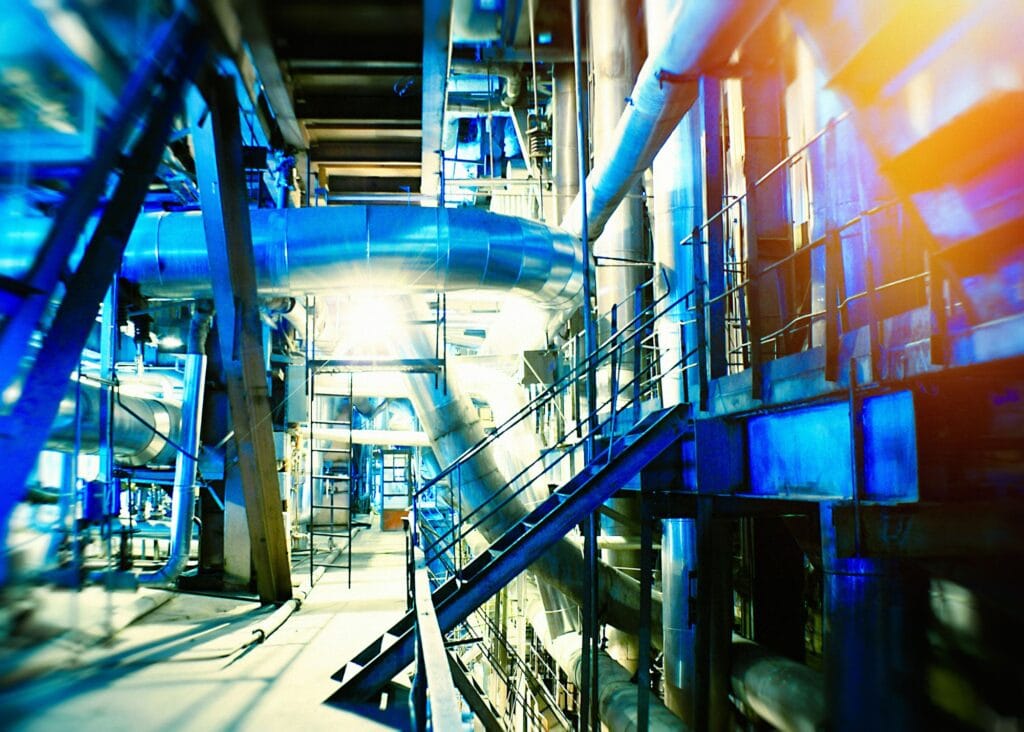
Why Biomanufacturing Matters: The Bioeconomy and Supply Chain Security
It’s worth stepping back to ask: why is the federal government so keen on biomanufacturing in the first place? The short answer is enormous opportunity coupled with strategic vulnerability. Advances in biotechnology promise to remake huge swaths of the economy – potentially $2 to $4 trillion in annual global economic impact by 2030-2040, according to McKinsey. Everything from medicine, agriculture, textiles, plastics, fuels and even electronics can be improved or produced via biological processes. Imagine yeast cells engineered to secrete industrial enzymes, or algae cultured to produce aviation fuel, or bacteria programmed to synthesize pharmaceutical compounds. This is often dubbed the “Bio Revolution,” and the U.S., with its research leadership, stands to benefit immensely.
But the flip side is that if the U.S. doesn’t build up manufacturing, others will dominate these supply chains. We’ve learned from semiconductors and batteries that inventing something isn’t enough; one must also make it at scale to reap the economic and geopolitical rewards. In biomanufacturing, China has taken a commanding lead in production capacity, even though U.S. labs still lead in research. Consider this stunning fact: China’s annual output of fermentation-based products exceeds 30 million tons – about 70% of the world’s fermentation capacity. In other words, China has built the lion’s share of the factories that use microbes to churn out amino acids, vitamins, organic acids, and other bulk biochemicals. It now “leads the world in the production of bulk bio-based products” like those vitamins and amino acids. If you take a daily vitamin C tablet or drink a zero-calorie soda sweetened with sucralose, chances are high the ingredients were fermented in a Chinese industrial park.
This dominance isn’t just academic; it has real consequences for U.S. resilience. During COVID-19, we saw how overreliance on foreign supply chains for medical products can leave nations vulnerable. In the realm of biomanufacturing, officials worry about similar chokepoints. For example, 90% of the raw materials for antibiotics are produced in China, a fact that raises eyebrows at the Pentagon and FDA alike. Many advanced materials for defense systems (specialty polymers, energetic materials) currently have no domestic bio-based source; if overseas producers cut us off, could we make them here? Right now, American firms facing a lack of local fermentation facilities have often “had to seek relevant facilities overseas, taking American R&D with them and risking IP loss,” BioMADE warns. That’s precisely the scenario the DoD wants to reverse. By funding capacity onshore, the U.S. hopes to “secure domestic supply chains for needed materials” and not be beholden to foreign producers.
There’s also an offensive economic angle: capturing more of the value chain. If U.S. companies can manufacture at home what they design in home labs, that means domestic jobs – from technicians and engineers to construction and agriculture. Remember, many bio-based products start from agricultural feedstocks like corn, sugar beets, or soy. BioMADE emphasizes that bioindustrial manufacturing will create new markets for American farmers and jobs in rural communities supplying those feedstocks. It’s a 21st-century twist on farm-to-factory: Midwest corn becoming bioplastics or sustainable aviation fuel in a biorefinery, rather than exported as raw grain. States like Minnesota clearly see the potential; in the Maple Grove project, the state’s economic development agency chipped in funding alongside the DoD, eager to anchor a new industry hub. The regional spread of these investments (California, Minnesota, and planning grants in Ohio, Illinois, etc.) also hints at a political upside – biotech manufacturing as a source of middle-American manufacturing revival, not just coastal tech jobs.
In short, biomanufacturing sits at the nexus of economic promise and national security necessity. The DoD’s own 2023 biomanufacturing strategy explicitly tied to the National Defense Strategy makes this clear: the goal is to ensure an enduring U.S. advantage by seeding biotech innovation and “develop biomanufacturing at home… to create a self-sustaining domestic ecosystem”. That year, the Pentagon announced $1.2 billion for new biomanufacturing efforts focused on developing mission-critical materials domestically (avoiding “fragile supply chains”) and creating materials with novel properties for defense. The Hayward pilot plant checks all those boxes – it will help companies prove processes to make critical defense items like fuels and polymers here in the U.S., and do so in partnership with the military from day one.
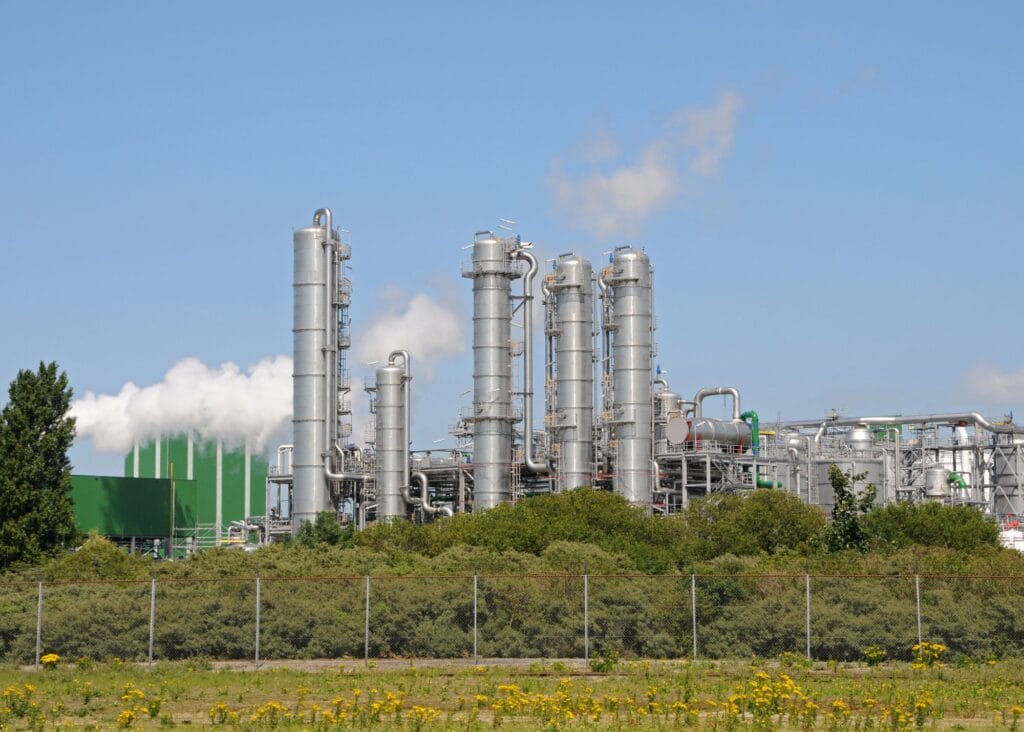
Bridging the Scale-Up “Valley of Death” for Bio Startups
Another often-missed aspect of this initiative is how it rewrites the playbook for venture-backed biotech startups. Over the past decade, synthetic biology companies attracted billions in investment on the promise of engineering biology to replace petroleum-based industries. Venture capital flooded in – global synbio startups saw funding soar from roughly $3 billion in 2019 to a peak of about $22 billion in 2021. That 2021 boom, spurred by pandemic-era interest and some high-profile IPOs, has since deflated: investment fell to $10.3 billion in 2022 and roughly $6.9 billion in 2023, a steep drop as hype gave way to the hard reality of scaling challenges. Several once-vaunted bio startups stumbled; see the case of Zymergen (acquired at a fire-sale price) or Amyris (which filed for bankruptcy in 2023 after struggling to profitably mass-produce its bio-based chemicals). The buzzwords of 2016-2021 – bioeconomy, synthetic biology, fermentation tech – started sounding to some investors like earlier cleantech bubbles that burst.
What went wrong? A big factor was the “scale-cost paradox” many startups faced. It’s relatively easy (and cheap) to produce a few liters of a novel molecule in a lab fermenter; it’s vastly harder (and expensive) to produce thousands of tons of it competitively. New bio-based products often look great on paper – sustainable, clever, high-performance – but if their production cost at scale can’t beat incumbent oil-based processes, the market won’t bite. Startups found themselves needing huge capital to build plants to achieve economies of scale, yet unable to raise that capital without first proving a market which required a large volume of product. A classic chicken-and-egg problem: no large plant, no low costs; no low costs, no market; no market, no financing for a large plant.
This is where government-backed infrastructure can make a decisive difference. By providing shared piloting and demo-scale facilities, the BioMADE network gives startups a way to get to meaningful production volumes without astronomical upfront capital expenditures. They can iterate processes, do techno-economic analyses on real hardware, and even fulfill initial commercial orders from a pilot line, all at a fraction of the cost of building their own facility. As one bio manufacturing entrepreneur noted, today VCs are largely unwilling to fund big CapEx projects, so young firms must rely on contract manufacturers and optimize processes before thinking of their own plant. The problem was, the U.S. had a shortage of such contract manufacturers, especially at intermediate scales. This led to that backlog where companies queued for limited slots at the few existing pilot plants, or flew overseas to use facilities in Europe or Asia. Now, with new public-funded sites coming online, many more companies can be served. It’s essentially increasing the “biomanufacturing bandwidth” of the nation.
For investors, this could mean the bio startup pipeline becomes less risky and more fruitful. Instead of sinking enormous sums into one moonshot facility, funds can spread bets among many firms who share facilities and de-risk their scale-up. The government’s bet is that a relatively modest investment (tens of millions per site, versus hundreds of millions each company might spend solo) can unlock a cascade of private innovation. There’s precedent for this: just as NASA’s contracts for SpaceX provided an anchor customer to jumpstart a commercial space industry, the DoD’s support for biomanufacturing could validate the market and attract more private capital back into the field. It’s telling that industry voices at the recent SynBioBeta conference called for exactly this kind of public role – urging that “we need governments to catalyze demand” for sustainable bioproducts and help firms overcome the scale barrier. Now the government is not only catalyzing demand (as a buyer of bio-based fuels, materials, etc.) but also catalyzing supply by building the factories.
We should be clear: this won’t magically make every bio-based product viable. Each product still needs to compete on cost and performance. But shared infrastructure can significantly shorten the learning curve and lower costs through economies of scale and learning-by-doing across multiple projects. A biomanufacturing pilot network can also foster standardization – e.g. common equipment and protocols – which a recent report noted could make bio facilities an investable asset class, much like data centers or solar farms. If bio hubs become plug-and-play, with 80-90% common equipment for any product, investors may grow more comfortable financing them as predictable infrastructure. The government’s imprimatur (and risk sharing) certainly helps on that front.
National Security and Geopolitical Stakes
It’s no coincidence the Department of Defense is spearheading this push. Historically, many American industrial advances have been driven by defense needs – think of aerospace (jets and rockets), nuclear technology, the internet’s precursor (ARPANET), or semiconductor manufacturing itself (the Pentagon was an early funder of microelectronics). Today, DoD sees biotechnology as a strategic domain where it must ensure U.S. leadership, just as it did with computing and space. The official DoD Biomanufacturing Strategy released in 2023 makes clear that the military envisions a wide array of applications: “production of fuels, chemicals, and even construction materials” using biology, as well as “environmental sensors, wearable tech, and materials with wholly novel properties”. Defense R&D chiefs talk about things like repairable materials, self-healing coatings, or energy-dense biofuels for hypersonic weapons – things that could confer a battlefield edge.
Moreover, Pentagon planners worry that if the U.S. bioindustry falters, we could be outpaced or even cut off by rivals in a crisis. They note that China has made biotech a national priority for 20 years and may overtake the U.S. in various biotech metrics. In 2022, China issued a Five-Year Plan for the Bioeconomy that integrates biology into manufacturing, energy, and agriculture at a national scale. It’s part of a broader “whole-of-nation” approach: from education (half of global biotech students are now in China) to massive infrastructure builds, China is knitting biotech into its economic strategy in a way the U.S. hadn’t – until now. The U.S. government, belatedly, is responding with its own all-of-government effort. The White House pointed out in September 2022 that the bioeconomy efforts would “strengthen supply chains, improve health, and reduce carbon emissions”, framing it as much an economic competitiveness move as a scientific one.
The Hayward and Maple Grove facilities can thus be seen as early battles in a longer-term race. It’s a race for technological leadership (who can innovate fastest), for manufacturing prowess (who can make those innovations at scale), and for securing the benefits (jobs, wealth, security) that flow from both. Allies are also waking up – the EU launched its own Bioeconomy strategy and invests in bio-based industries, and just as it matched the U.S. with its own European Chips Act, we may see similar co-investments in biotech. But for now, the U.S. seems to be taking a uniquely defense-driven angle. Indeed, Congress has shown rare bipartisan agreement on this; legislators like Rep. Betty McCollum of Minnesota have championed funding for BioMADE as a way to “develop a robust biotechnology manufacturing sector” critical to national defense. Biotech is one of the few arenas where, for example, a progressive Midwestern Democrat and the Pentagon’s R&D chiefs see eye to eye.
We should also consider what success looks like for this biomanufacturing initiative. In the near term (next 2-3 years), success will mean these pilot facilities open on time and on budget, and companies actually use them. By 2026, we could see dozens of startups and research teams running trials in Hayward – producing sample batches of new polymers, or fermentation-based jet fuel that the Air Force can test. We might also see more sites being announced; the DoD has solicited information on other needed capabilities, and has floated funding up to $100 million each for several full-scale bio production facilities under a program called the Distributed Bioindustrial Manufacturing Program. In fact, five planning grants were awarded in late 2024 to design facilities for things like “protein-based materials for next-gen fibers” (Ohio), “additives for high-performance aviation fuels” (Utah), and “biorefinery for critical chemicals for coatings and elastomers” (Lygos, planning a Midwest site). Those could translate into new bricks-and-mortar projects in the coming years, each serving specific niches but collectively bolstering the ecosystem. It’s not hard to imagine a future map of the U.S. dotted with biomanufacturing centers: renewable chemical hubs in the Midwest, synthetic fiber and materials plants in the South, pharmaceutical ingredient bioreactors in the Northeast, and so on – paralleling how semiconductor fabs and battery gigafactories are now sprouting nationwide post-CHIPS and IRA.
The Road Ahead for America’s Bioeconomy
For all the optimism, caution is warranted. Building industrial capacity is the start of the journey, not the finish. These pilot plants will need to demonstrate tangible results – cost reductions, successful scale-ups, and real products reaching the market or military use – to justify continued support. There’s also the challenge of workforce: biotechnology manufacturing requires skilled technicians and engineers. The U.S. will need training programs (community colleges, trade schools, etc.) to supply bio-process operators, much as it ramped up programs for chip fabrication. BioMADE and partners are already thinking along these lines, emphasizing education and workforce development as part of their mission.
Then there’s the market question. Will there be sufficient demand for the bio-based products coming out of these facilities? Here, policy can help too: just as the government provides incentives and procurement commitments for domestically made semiconductors or for electric vehicle batteries, it could preferentially purchase bio-based products. The U.S. military, for instance, is a huge consumer of fuels and materials – if it commits to buying sustainable aviation fuel or bio-based 3D printing polymers, that creates a guaranteed market that can pull these products into mass production. The Biden Administration’s Sustainable Aviation Fuel Grand Challenge, which aims to produce billions of gallons of biofuel, is one example of aligning demand with the new supply chains. The procurement might not even need to be permanent; just enough to achieve scale and competitiveness, after which the private civilian market can take over if the products are cost-effective and high quality.
For investors and industry strategists, the takeaway is that the U.S. bioeconomy is entering a new phase – one with serious government muscle behind it. It’s no longer fanciful start-ups in incubators talking about “changing the world with biology”; it’s the Department of Defense and state governments putting real dollars on the table to build fermentation plants and production lines. That legitimizes the sector in a profound way. It also underscores that this isn’t just granola environmentalism or sci-fi future tech – it’s about industrial competitiveness and national security in the here and now. The conversation around supply chains, once limited to chips and rare earth metals, now very much includes fermenters and microbes.
Will this bet pay off? If it succeeds, the U.S. might see a renaissance in manufacturing akin to the post-war boom, but centered on biotech. Thousands of new jobs in biomanufacturing could arise, from California to Minnesota and beyond. The country could regain control over critical supply chains – never again worrying, for example, where its essential medicines or materials come from – while also capturing a hefty share of the economic value of the bio-based revolution. American farmers might supply feedstock to domestic biorefineries that make competitively priced, greener chemicals and fuels, closing the loop between agriculture and high-tech manufacturing. And the Pentagon would sleep a little easier knowing it can source essential ingredients for defense technologies from factories on U.S. soil powered by American innovation.
Of course, there are pitfalls: cost overruns, the risk of government picking wrong technological winners, potential community pushback to new “biotech plants” if not managed safely, and the challenge of maintaining political support over time for these initiatives. Biomanufacturing won’t replace traditional manufacturing overnight; rather, it will gradually augment and in some cases disrupt it. The key will be demonstrating early wins. If within a couple of years these pilot plants produce, say, a novel bio-based jet fuel that the Air Force certifies, or enable a startup to commercially launch a biodegradable plastic that big customers adopt, those proof points will build momentum.
In any case, one thing is clear: biology is now a pillar of U.S. industrial strategy, not just a topic for academics or pharma companies. The quiet announcement out of Hayward, California is actually a loud signal – that the U.S. intends to compete and lead in producing the materials of the future, and it will do so by harnessing the power of living cells. In the coming decade, the image of a fermentation tank may become as iconic for American resurgence as the silicon wafer or the electric vehicle battery. The Pentagon’s biomanufacturing bet is ultimately a bet on American ingenuity – that given the tools and infrastructure, our innovators will not only invent the next big things in biology, but also build them, sell them, and export them to the world. And in a time of geopolitical uncertainty, that is a future well worth fermenting.


